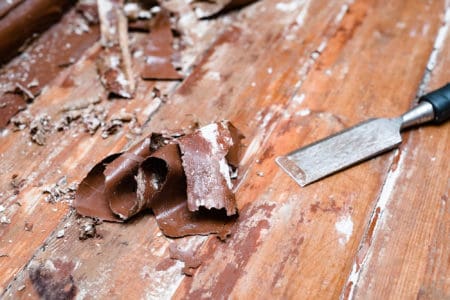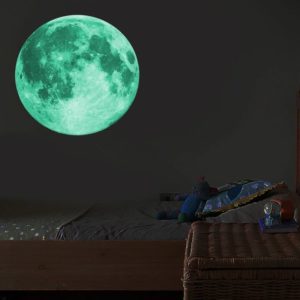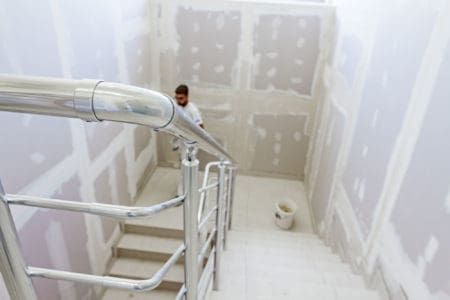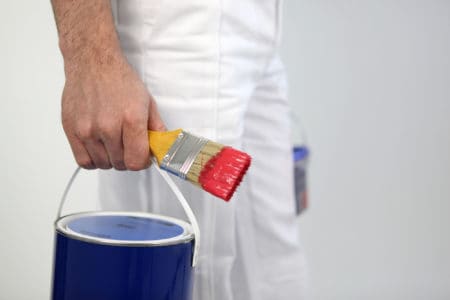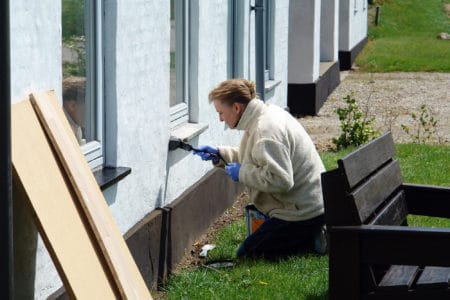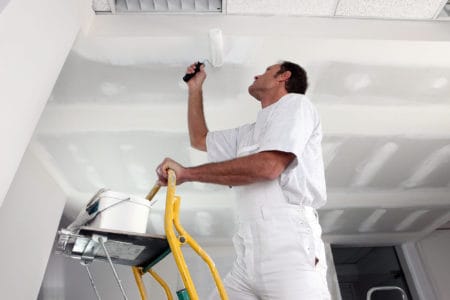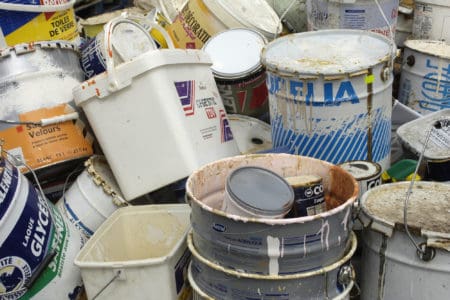Hardwood floors are attractive and make your home look warm and inviting, but what happens if you accidentally splash paint on the floor? And if it cures, it could be even trickier to remove paint from your wooden floor.
We show you how to remove paint from hardwood floors and share hints and tips to help you restore your floor to its former glory.
Key Takeaways
- Identify paint type: Determine if the paint is oil-based or water-based by using a cotton ball with rubbing alcohol on the paint surface.
- Soap and water: For water-based paint stains, use a damp rag with warm water and dish soap to scrub the paint off.
- Rubbing alcohol and lemon juice: Mix 3 parts alcohol to 1-part lemon juice, apply to the paint stain, and scrub with a rag or brush after 10 minutes.
- Paint remover or thinner: For stubborn oil-based paint stains, use paint remover or paint thinner, following safety precautions and manufacturer’s instructions.
What Type Of Paint Is It?
Essentially, there are two types of paint: oil-based and water-based, but before you start to remove that unsightly paint stain, you need to determine what type of paint you are dealing with.
Why is it important to know the type of paint? It helps to establish the best techniques to effectively remove the paint from your hardwood floor.
There is a simple way of finding out what paint type you are dealing with. Wet a cotton ball with rubbing alcohol and wipe over the surface of the paint. If residue lifts off and discolors the surface of the ball, it is a water-based product.
If the cotton ball is still clean, it is oil-based paint.
How To Remove Paint From Wooden Floors
So, what are the best methods of removing paint from hardwood floors without any lasting damage? Let’s take a look.
Soap and Water
If the stain is water-based paint, you might get it off using some warm water with a splash of dish soap. Grab a rag and dip it into the soapy water, and squeeze off the excess liquid, so the rag is damp.
Vigorously rub the rag over the paint spot, and it should start to lift off. Now grab a dry rag and wipe away the wet residue. If the paint doesn’t budge, use a putty knife or paint scraper to lift it off, but be careful that you don’t scratch the floor.
Repeat the process with the rag until all the stain is gone.
Rubbing Alcohol and Lemon Juice
Before getting started on the isopropyl alcohol, use the paint scraper and remove as much of the excess paint as possible. Take care that you don’t scratch the surface of the wooden floor.
The secret to rubbing alcohol is to give it time to work its magic. Mix 3 parts alcohol to 1-part lemon juice in a bowl, and cover the paint with the solution. Leave it to sit on the stain for at least 10 minutes.
Now grab a rag and scrub the paint away. If you need something with a bit more punch, try using an old toothbrush or a small scrubbing brush. When the stain is gone, wipe the area clean with a dry cloth.
Heat Gun
This is a simple way to remove both oil and water-based paints from your wooden floor. Just grab the heat gun and point it at the paint. The heat will soften the stain, making it easier to scrape away with a putty knife or paint scraper.
The trick here is not to overheat the paint, or you risk burning the floor, leaving a worse mark than the one you’ve just removed. You could always try a hairdryer on the hottest setting if you don’t own a heat gun. When the stain is off, wipe the area clean with a damp rag.
Paint Remover
If you have really stubborn stains on your wooden floor, it’s time to step it up with paint remover. This method may lift the sealer or varnish you have on the floor, so take care when covering the paint stain.
Paint remover comes in two types of viscosity: thin and paste, and the thicker variety is better because it’s easier to control. Dab a layer on the paint stain and leave it to sit and do its job. The length of time it takes depends on the product, so always follow the manufacturer’s instructions.
You also need to take safety precautions and don a face mask and safety gloves to avoid getting chemical splatters on your skin. Paint remover also gives off a strong odor, so the face mask should prevent you from inhaling potentially dangerous fumes. Also, open windows and doors if you are using them indoors to allow the air to flow.
Once the paint has softened, grab a scraping tool and gently lift it from the wooden surface. If there is still some stain left, repeat the whole process until the paint disappears. To finish, wipe the surface area with a damp cloth to remove any lingering residue of paint remover.
Paint Thinner
Paint thinner only works on oil-based paints, so if you have conducted the rubbing alcohol test and know what you are dealing with, this could be an effective method.
Like paint remover, thinners give off strong and noxious odors, so you might want to don a face mask and open all the doors and windows for better ventilation.
Dab a small amount of the thinner on a dry rag and rub it on the paint stain until it vanishes. You should observe the same precautions as using paint remover because it could damage your hardwood floor if you rub too hard.
Wipe clean with a damp cloth to remove any thinner residue.
How To Remove Wet Paint From Wooden Floors
The secret is to wipe the paint up immediately it makes contact with your hardwood floor. The longer you leave it, the trickier it becomes to get it up without it permanently staining.
Mix up a solution of 3 parts rubbing alcohol to 1-part lemon juice, dip your rag in the formula, and wring off any excess liquid. Now wipe away the paint spatter, taking care to remove every last trace. You may need to perform this method more than once to get the best results.
Top Tips To Prevent Paint Splatters
The amount of staining you get depends on several factors. What are the hints and tips you can use to reduce instances of splatter? Let’s take a look.
Use a Smaller Nap
The nap on a roller refers to its thickness. The thicker the nap, the more paint adheres to the roller, which increases your chances of paint splatter. By switching to a thinner nap, it reduces the amount of paint that drips onto your hardwood floor.
Switch To a Brush
Rather than using a roller, try switching to a paintbrush. It takes a little longer to paint your walls and ceilings, but you reduce the amount of paint that falls on your floor.
Don’t Overload the Brush or Roller
Applying too much paint to the paintbrush or roller increases the chances of splatter. You might think it reduces the need to stop and reload with paint, but in reality, most of the color falls to the floor.
Get a Roller Guard
A roller shield fits around the roller like a mudguard on a bicycle to catch the excess paint that flies off when you roll interior paint on the wall or ceiling. It is an effective way to reduce paint contaminating your hardwood floor.
However, it also does an excellent job of restricting your view of the roller when painting.
Lay Drop Cloths
This is the most obvious way to prevent paint splatters. Cover all your furniture and make sure your hardwood floor is protected. Old curtains make great drop cloths, as does plastic sheeting from the hardware store.
